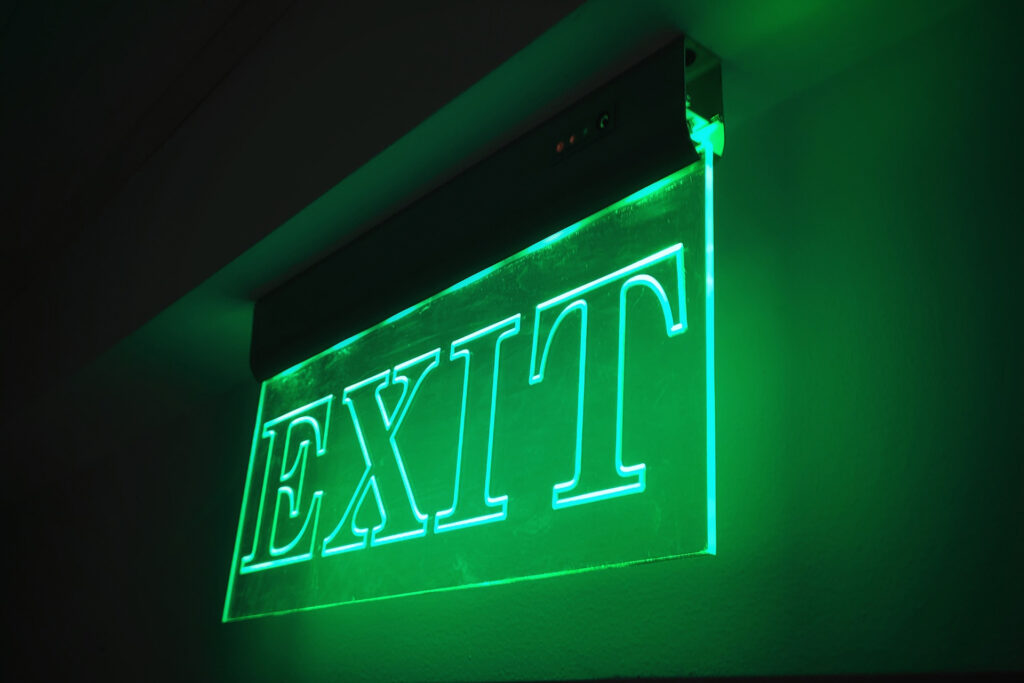There was a time when the home lives of your employees and co-workers was a sacred, unknowable realm. Let’s call it 2019.
Fast-forward through over a year of children making guest appearances in Zoom backgrounds, the slow slide into loungewear as daywear, and even the odd unfortunate trip to the bathroom with laptop in tow, and it’s fair to say we all know more about the messy, everyday existence of those we work with than we could ever have desired.
But as the return to the office looms into view, is going back to the way we were really an option?
With working from home now firmly out of the box – and hybrid working concepts like the 3/2 week (three days in the office, two from home) on the horizon – work will be the first battleground of our post-Covid reality. All of which points to the need for a revolution in how we think about – and design – experiences that improve the lives of working people.
Enter the Experience Economy and The WXO Founding Circle, who assembled for our latest Experimental Campfire to examine how to stage employee experiences in a post-pandemic world.
Led by Joe Pine, co-author of The Experience Economy, we asked ourselves: how can we use our experience design skills to make the time employees spend at work not just time well spent, but also time well invested?
No time for time-wasters

“The number one requirement of companies today is to engage their employees. And you do that through experiences. And time is the currency of experiences.”
Joe Pine
Pine began by explaining the progression of economic value in terms of time.
“Services are time well saved, but experiences are time well spent. That’s what people are looking for. It’s what customers are doing when they’re paying you for an experience.”
Joe Pine
To get to time well spent, however, you first have to get to time well saved. Pine used the example of how in our everyday lives, we use apps like Uber and Amazon to save us time – and that the same approach to tech needs to apply in the workplace.
However! Before we can begin to talk about saving time for our employees, we first need to stop wasting it. Pine mentioned the movie Office Space, where the characters waste time filing pointless TPS reports, as a classic example of what employers shouldn’t do.
“The most precious resource on the entire planet is the time of individual human beings. So we have to stop wasting it; then we need to provide ways to save it; and then we can get to how to provide employees with time well spent, so that they actually value the time they spend in our employ.”
Joe Pine
The five elements of engaging experiences

“When it comes to staging employee experiences, the same exact principles apply as for customers.”
Joe Pine
So we want to make employee experiences as engaging, memorable, remarkable and compelling as those we create for consumers. The way to do this is by designing experiences that are:
- Robust
- Cohesive
- Personal
- Dramatic
- Transformative
Robust: hit the sweet spot

Robust experiences need to hit the sweet spot between entertainment, educational, escapist and esthetic. The best experiences have elements of all of these, rather than focusing on just one.
Talking about the learning and development sector, Pine gave the example of the maligned term “edutainment”. Combining education and entertainment is necessary to hold people’s attention, he said.
“Eduscapist” could apply to a field trip, where you immerse yourself in what you’ve already learned in a traditional setting. And “edusthetic” could refer to the environment in which people learn, which is incredibly important – particularly in our current home-working situation, where people might not have the money, space or solitude to create the optimum environment on their own.
Cohesive: find your theme

Just as consumer experiences should have a clear theme, so should employee experiences. The appliance company Whirlpool, for example, came up with a training programme based on MTV’s reality series The Real World called The Real Whirled.
Employees were put in a house together for a few days, living with each other and Whirlpool appliances. The result? An impressive 50% greater retention for those who had gone through the training.
Personal: engage on the inside

To transform goods and services into an engaging experience, you have to customize them to the needs of the individual.
Pine gave the example of the Mid-Columbia Medical Center in Oregon, which uses the theme “personalize, humanize, demystify”, or PhD.
“The waiting room is actually a nurse’s station, so the nurses, patients and their family members can have a real conversation about what’s going on in a comfortable environment. The entrance with the piano player is not the patient entrance; it’s the employee entrance, to give them a liminal space between work and home where they can decompress or charge up for the day ahead.”
Joe Pine
Dramatic: work is theatre

There is a core distinction between services, which focus on the “what”, and experiences, which focus on the “how”. To turn something functional into an engaging encounter, you therefore need to follow the maxim that “work is theatre” and prepare your employees to be on a stage. Direct them to act, characterise their roles, give them rehearsal time.
When creating dramatic experiences for employees, you should be thinking about the “five Es” of their journey:
- Enticing (making them want to work for you)
- Entering (onboarding)
- Engaging (creating time well spent)
- Exiting (preparing them to move on)
- Extending (thinking of life beyond the company)
Few companies currently do a good job of exiting and extending, as Joe McLeod discussed in his piece on the importance of “endineering”. By ignoring this stage they are losing someone who could be a future advocate for the company – which could be avoided if they consider the whole dramatic arc.
“This 5E model applies at any level: it’s a fractal,” said Pine. It’s relevant whether you’re looking at the arc of the days of an event, someone’s progression within a company, or their entire career.
Transformative: guide towards change

Transformative experiences are those that guide us to change and achieve our aspirations. For employees, it’s especially important to:
- Transform them into a better employee who provides more value for the company;
- Transform them so they can attain their own aspirations, even if that means eventually leaving.
Pine gave the example of BetterUp, a coaching platform that focuses on helping companies that are going through a transition by providing coaching that is customized to each individual. After analyzing each person, they match them to several coaches on the platform that they are able to choose from themselves. These transformative experiences are a true example of time not just well spent, but well invested; they extend into the future. As Lynda Gratton from London Business School said, “HR needs to become a broker of time”.
Autonomy vs community

Our experience experts responded to Pine’s presentation with their questions and thoughts.
Neuroscientist Paul Zak responded with his concern about the “knowledge problem” – the assumption that managers know what’s most engaging for employees. He argued that only employees can know this, and that all meetings should be opt-in.
James Wallman, the WXO’s CEO, added that as per Dan Gilbert’s book Stumbling Upon Happiness, people don’t actually know what will make them happy.
“If the principles of human psychology will always be applicable, how can we guide people towards doing those things that will increase their chances of happiness and wellbeing?”
James Wallman
Karen Guggenheim, the founder of the World Happiness Summit, disagreed.
“I think people are intuitively their own experts on their happiness. They’re just not aware of it or how to achieve it.”
Karen Guggenheim
On the topic of self-selecting in the workplace, experience designer Nasya Kamrat pointed out the equal importance of collaboration.
“A company is a community. If someone’s input would be beneficial to someone else, they should be present. So how do you self-select with community in mind?”
Nasya Kamrat
Mike Lai, the Dean of the X Thinking Institue in Shanghai, expanded on this idea of autonomy of the individual versus the happiness of the group.
“It’s a relationship – there needs to be consent on both sides. As long as leadership makes the vision and direction clear, employees have consent to choose to go or not to go in that direction.
A company is an organism, just like a person, and it evolves in the same way. It’s up to the collective group to design that direction so there’s collective value for the organisation, customers and individual.”
Mike Lai
Blurring the work-life balance

Wallman revisited his point from last week’s Campfire about how employee experience is the “canary in the goldmine” that leads to profit.
“Companies care about growth, and NPS is the one number you need to grow. NPS is a marker of good customer experience, as it means people will come back again. This is why companies now should care about employee experience, because employee experience has an impact on customer experience.”
James Wallman
Given that what happens at home will spill into their working lives, it’s therefore important that companies are aware of the employee experience outside of working hours.
Kamrat added that the last year has made it impossible to disconnect employees from humans.
“We’ve seen all the stuff that makes people’s lives messy. We don’t have the luxury of separating work from life any more. It’s authentic – you see people as someone you care about, rather than just a line on your payroll.”
Nasya Kamrat
Transformation never ends

“Every interaction you have with employees is an enticing phase of their experience.”
Joe Pine
Experience design professor Barbara Neuhofer pointed out that if the process of transformation is ongoing, we need to continually revisit our employees’ needs and ambitions.
“We’re all on our hero’s journeys – the me I am now is not the me I was two months ago. So we need to get to know our employees from scratch, especially if they’re doing a lot of transformation.”
Barbara Neuhofer
Wallman wondered if this constant upgrade that we look for at work is reminiscent of gaming and trying to reach the next level. As John Connors, founder of the Color Run, said, could it be interesting to look at the workplace in the context of a group escape room, with all participants seeking solutions to a clearly defined objective together?
The WXO Take-Out
- The pandemic has shifted our focus even further towards individualisation and personalisation, and the workplace is no different. As Pine stated at the beginning of his presentation, “I don’t like ‘employee experience’, it’s ’employee experiences’.”
- Our most precious resource is time – so we need to move from time wasted, to time saved, to time well spent, to time well invested.
- To do this, we need to create engaging experiences for employees the same way we do for customers – making sure they are robust, cohesive, personal, dramatic, and transformative.
- As much as autonomy is crucial for happiness within and outside the workplace, it needs to be balanced with the needs of others: a company is a community.
- And the more we understand and have empathy for each other, the better we can collaborate.
- We can no longer think of people as just employees or consumers – we are all human beings with histories, challenges and lives.
- The opportunity for experience designers is therefore to use their skills to create employee experiences that are empathetic, generative, and respond to the individual. As Wallman concluded: “it’s actually not about employee experiences; it’s about human experiences.”
We’d love to hear about how you’re staging engaging employee experiences in your own workplace. Click here to let us know.
Interested in taking part in discussions about experiences and the Experience Economy? Apply to join the WXO today.






